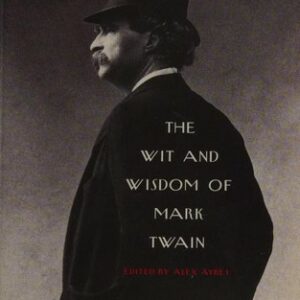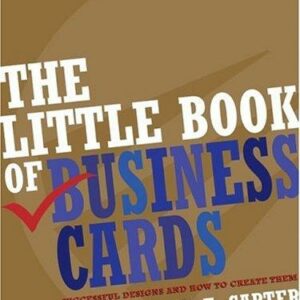Sex, Time, and Power
$24.00
| Title | Range | Discount |
|---|---|---|
| Trade Discount | 5 + | 25% |
- Description
- Additional information
Description
As in the bestselling The Alphabet Versus the Goddess, Leonard Shlain’s provocative new book promises to change the way readers view themselves and where they came from.
Sex, Time, and Power offers a tantalizing answer to an age-old question: Why did big-brained Homo sapiens suddenly emerge some 150,000 years ago? The key, according to Shlain, is female sexuality. Drawing on an awesome breadth of research, he shows how, long ago, the narrowness of the newly bipedal human female’s pelvis and the increasing size of infants’ heads precipitated a crisis for the species. Natural selection allowed for the adaptation of the human female to this environmental stress by reconfiguring her hormonal cycles, entraining them with the periodicity of the moon. The results, however, did much more than ensure our existence; they imbued women with the concept of time, and gave them control over sex—a power that males sought to reclaim. And the possibility of achieving immortality through heirs drove men to construct patriarchal cultures that went on to dominate so much of human history.
From the nature of courtship to the evolution of language, Shlain’s brilliant and wide-ranging exploration stimulates new thinking about very old matters.
Preface: Iron/Sex
Acknowledgments
Part I: Iron, Sex, and Women
1. Unknown Mother/African Eve
2. Big Brain/Narrow Pelvis
3. Red Blood/White Milk
4. Plant Iron/Meat Iron
5. Gyna Sapiens/Gyna All-the-Others
6. Periods/Perils
7. Her Climax/His Climax
8. Grandmothers/Circumcision
Part II: Iron, Sex, and Men
9. Prey/Predator
10. Carnivory/Vegetarianism
11. Menarche/Mustaches
12. Premenstrual Tension/Masturbatory Tension
Part III: Sex and Time
13. Moon/Menses
14. Woo/I Do
15. Anima/Animus
16. Gay/Lesbian
17. Same Sex/Hermaphrodite
Part IV: Death and Paternity
18. Mortality/Angst
19. Superstition/Laughter
20. Father/Mother
21. Incest/Dowries
22. Wife/Husband
Part V: Men and Women
23. Misogyny/Patriarchy
24. Unknown Mother/African Eve/Modern Woman
Epilogue
Notes
Bibliography
Illustration Credits
Index
Preface: Iron/Sex
Acknowledgments
Part I: Iron, Sex, and Women
1. Unknown Mother/African Eve
2. Big Brain/Narrow Pelvis
3. Red Blood/White Milk
4. Plant Iron/Meat Iron
5. Gyna Sapiens/Gyna All-the-Others
6. Periods/Perils
7. Her Climax/His Climax
8. Grandmothers/Circumcision
Part II: Iron, Sex, and Men
9. Prey/Predator
10. Carnivory/Vegetarianism
11. Menarche/Mustaches
12. Premenstrual Tension/Masturbatory Tension
Part III: Sex and Time
13. Moon/Menses
14. Woo/I Do
15. Anima/Animus
16. Gay/Lesbian
17. Same Sex/Hermaphrodite
Part IV: Death and Paternity
18. Mortality/Angst
19. Superstition/Laughter
20. Father/Mother
21. Incest/Dowries
22. Wife/Husband
Part V: Men and Women
23. Misogyny/Patriarchy
24. Unknown Mother/African Eve/Modern Woman
Epilogue
Notes
Bibliography
Illustration Credits
Index
No clear and compelling explanation currently exists for the sudden emergence of big-brained Homo sapiens 150,000 years ago. Here, Leonard Shlain proposes an original thesis that argues that profound changes in female sexuality hold the key to this mystery.
According to Shlain, bipedalism, narrow pelvises, and enormous fetal heads precipitated a crisis for our species. Mothers faced a grave death threat in childbirth. To compensate, women lost estrus and its urgency to copulate, but gained veto power over sex. Drastic reconfiguration of their reproductive cycle, particularly the new feature of heavy menses, allowed women to discover the dimension of time and with it the insight that sex caused pregnancy. Men used foresight to become the planet’s most dangerous predator but they suffered terror when they learned they were doomed to die. Inventing religions and afterlives to ameliorate the knowledge of death, men then learned the part they played in impregnation. The concept of paternity drove men to create patriarchal cultures designed to control women’s reproductive choice. But the insights, first discovered by women, also created the conditions for two people to love each other more deeply and longer than any other animal.
Throughout Sex, Time, and Power, Shlain offers carefully reasoned and certain to be controversial discussions on subjects such as menses, orgasm, masturbation, menopause, circumcision, male aggression, the evolution of language, homosexuality, and the origin of marriage. Written in a lively and accessible style, Sex, Time, and Power is certain to generate heated debate in the media and among readers interested in human evolution and the history of sexuality.
Preface: Iron/Sex
Acknowledgments
Part I: Iron, Sex, and Women
1. Unknown Mother/African Eve
2. Big Brain/Narrow Pelvis
3. Red Blood/White Milk
4. Plant Iron/Meat Iron
5. Gyna Sapiens/Gyna All-the-Others
6. Periods/Perils
7. Her Climax/His Climax
8. Grandmothers/Circumcision
Part II: Iron, Sex, and Men
9. Prey/Predator
10. Carnivory/Vegetarianism
11. Menarche/Mustaches
12. Premenstrual Tension/Masturbatory Tension
Part III: Sex and Time
13. Moon/Menses
14. Woo/I Do
15. Anima/Animus
16. Gay/Lesbian
17. Same Sex/Hermaphrodite
Part IV: Death and Paternity
18. Mortality/Angst
19. Superstition/Laughter
20. Father/Mother
21. Incest/Dowries
22. Wife/Husband
Part V: Men and Women
23. Misogyny/Patriarchy
24. Unknown Mother/African Eve/Modern Woman
Epilogue
Notes
Bibliography
Illustration Credits
Index
No clear and compelling explanation currently exists for the sudden emergence of big-brained Homo sapiens 150,000 years ago. Here, Leonard Shlain proposes an original thesis that argues that profound changes in female sexuality hold the key to this mystery.
According to Shlain, bipedalism, narrow pelvises, and enormous fetal heads precipitated a crisis for our species. Mothers faced a grave death threat in childbirth. To compensate, women lost estrus and its urgency to copulate, but gained veto power over sex. Drastic reconfiguration of their reproductive cycle, particularly the new feature of heavy menses, allowed women to discover the dimension of time and with it the insight that sex caused pregnancy. Men used foresight to become the planet’s most dangerous predator but they suffered terror when they learned they were doomed to die. Inventing religions and afterlives to ameliorate the knowledge of death, men then learned the part they played in impregnation. The concept of paternity drove men to create patriarchal cultures designed to control women’s reproductive choice. But the insights, first discovered by women, also created the conditions for two people to love each other more deeply and longer than any other animal.
Throughout Sex, Time, and Power, Shlain offers carefully reasoned and certain to be controversial discussions on subjects such as menses, orgasm, masturbation, menopause, circumcision, male aggression, the evolution of language, homosexuality, and the origin of marriage. Written in a lively and accessible style, Sex, Time, and Power is certain to generate heated debate in the media and among readers interested in human evolution and the history of sexuality.
Preface: Iron/Sex
Acknowledgments
Part I: Iron, Sex, and Women
1. Unknown Mother/African Eve
2. Big Brain/Narrow Pelvis
3. Red Blood/White Milk
4. Plant Iron/Meat Iron
5. Gyna Sapiens/Gyna All-the-Others
6. Periods/Perils
7. Her Climax/His Climax
8. Grandmothers/Circumcision
Part II: Iron, Sex, and Men
9. Prey/Predator
10. Carnivory/Vegetarianism
11. Menarche/Mustaches
12. Premenstrual Tension/Masturbatory Tension
Part III: Sex and Time
13. Moon/Menses
14. Woo/I Do
15. Anima/Animus
16. Gay/Lesbian
17. Same Sex/Hermaphrodite
Part IV: Death and Paternity
18. Mortality/Angst
19. Superstition/Laughter
20. Father/Mother
21. Incest/Dowries
22. Wife/Husband
Part V: Men and Women
23. Misogyny/Patriarchy
24. Unknown Mother/African Eve/Modern Woman
Epilogue
Notes
Bibliography
Illustration Credits
Index
Leonard Shlain is the author of Art & Physics: Parallel Visions in Space, Time & Light, and The Alphabet Versus the Goddess: The Conflict Between Word and Image. He is the chief of laparoscopic surgery at California Medical Center in San Francisco.
1. The author writes that historically “private space was under a woman’s sphere of influence but public space fell under the purview of men” (page 341). What happens when the private and public spaces meet? How does one’s home serve as a microcosm for society?
2. What are your opinions on the division of power between the sexes? Should men and women have set roles within a society or should responsibilities be dictated by ability? How do gender roles affect your life as compared to the lives of your parents? The lives of your children?
3. The author describes adolescence as a time of sexual experimentation and initiation. How does this relate to your own experience as a teenager? How did your family and friends prepare you for this transformation?
4. Shlain proposes that menses was the innovative device “that taught our species how to tell time” (page 184). How do you mark the passage of time, in both small and large increments? What intimate, familiar, or practical markers do you use in your daily life?
5. Gyna sapiens, to use the author’s term, was the first female to understand and subsequently manage her own reproductive processes. How, if at all, does this mirror the current debate topics of birth control and abortion? How is women’s sexuality represented and affected by today’s society with regard to the media, education and healthcare?
6. According to Sex, Time, and Power, the root of misogyny is men’s anger toward women’s ability to refuse sex. Discuss how this anger has manifested itself over the course of human evolution. Are there any current events that lend credence to this explanation?
7. Examine the list of traits attributed to Jung’s anima/animus divisions of the psyche (page 209). Which characteristics can you identify in your own personality? How do these manifest themselves in your life?
8. Which rituals typify our society’s approach to sex, time, and power today? Are there any historic rituals being phased out by contemporary culture? Is this a good or a bad thing? Are we creating new rituals to replace the old ones, and if so, what are they?
9. Do you agree with Shlain’s thesis? What were the strongest and weakest arguments made? Which of the author’s statements most surprised you?
US
Additional information
| Dimensions | 1.0500 × 5.5100 × 8.4400 in |
|---|---|
| Imprint | |
| ISBN-13 | |
| ISBN-10 | |
| Author | |
| Audience | |
| BISAC | |
| Subjects | sociology books, feminist gifts, Darwin, SCI027000, complexity, science book, feminist books, feminist theory, feminism books, sexual wellness, good books for women, self love books for women, science gifts for adults, science books for adults, psychology book, evolutionary psychology, evolutionary biology, psychology books, feminist, feminism, mental health, psychology, science, SOC028000, Sociology, Human nature, history, mental health books, history books, women in history, science books, women's history month, books for women, science gifts |
| Format |










